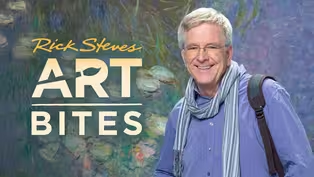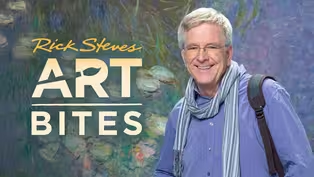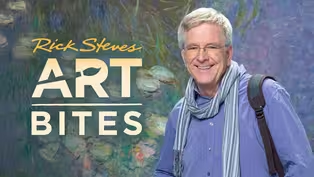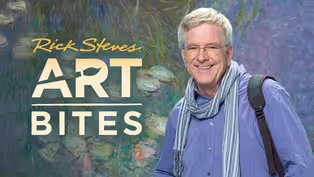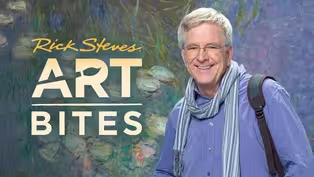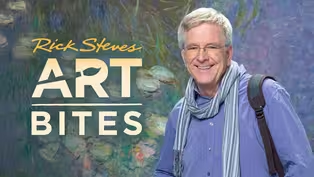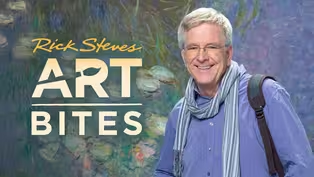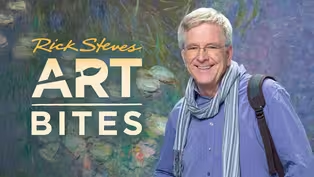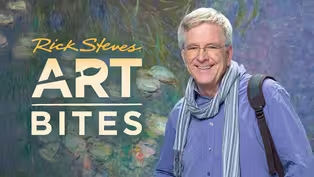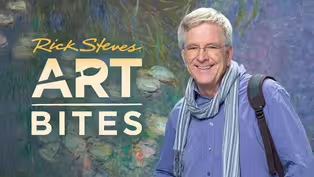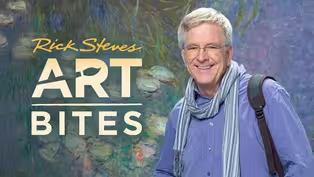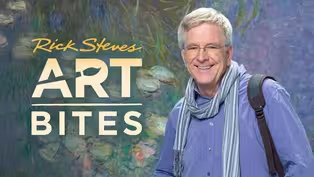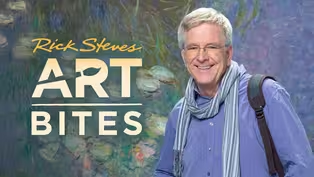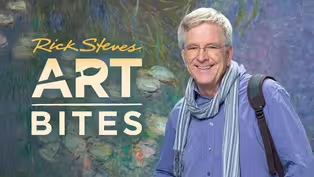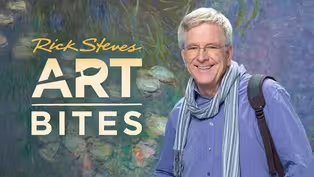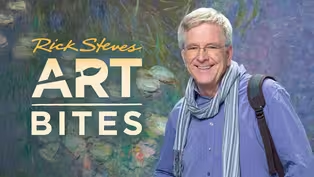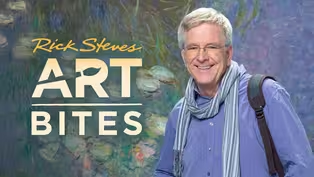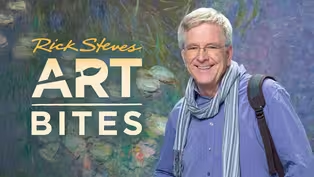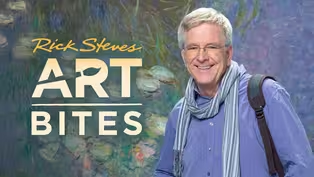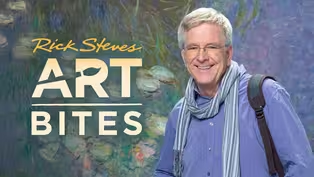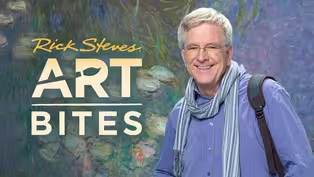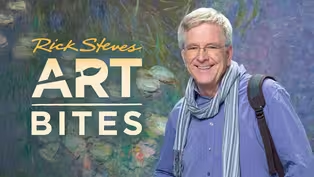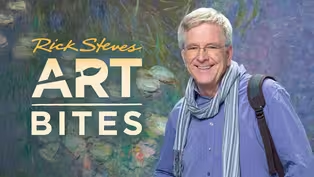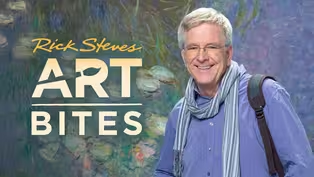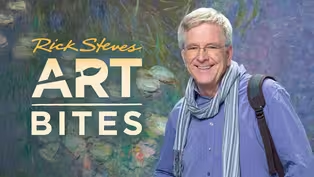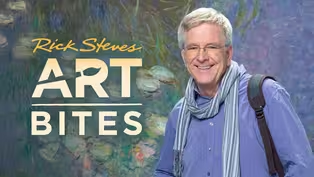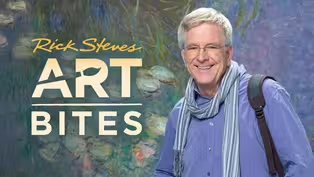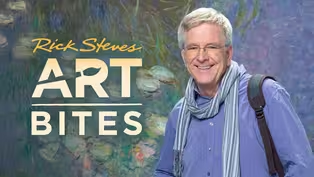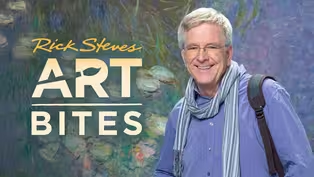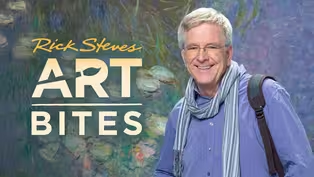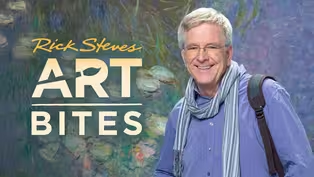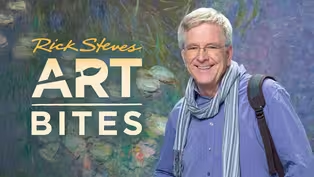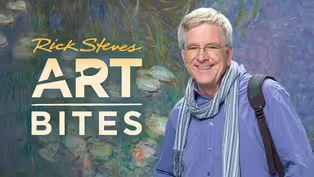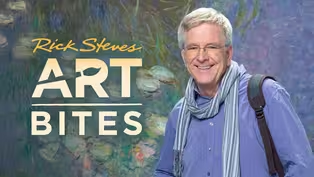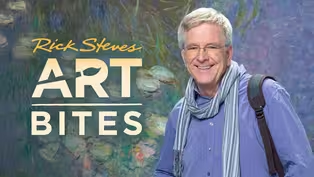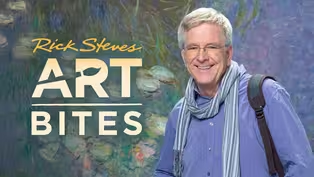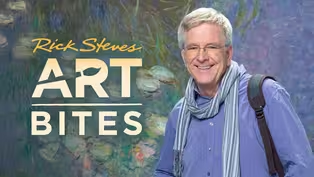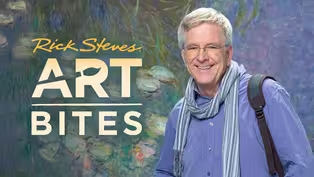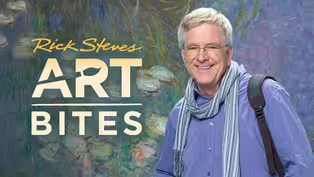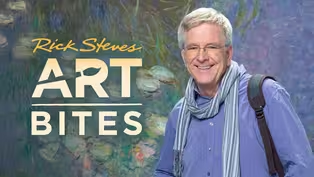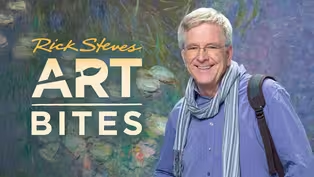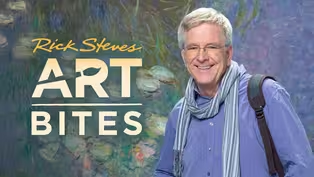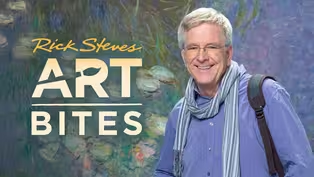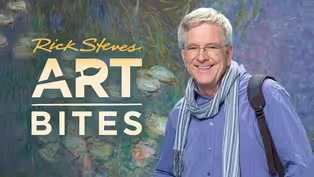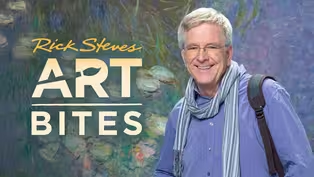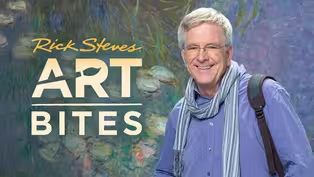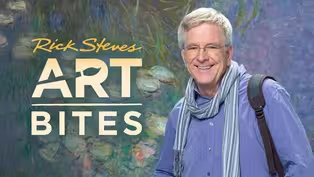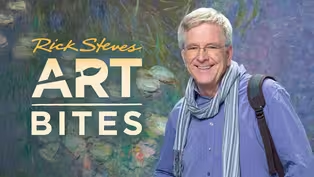Rick Steves' Europe
Art Bites 151: The Age of Discovery: Portugal and Spain
Clip | 5m 52sVideo has Closed Captions
Portugal had lacy Manueline architecture and Spain’s emperor had far-flung tastes.
Discoveries stoked the Renaissance with confidence, bold new ideas, and plundered New World gold. Portugal had its own lacy Manueline architecture and Spain’s rich and art-loving emperor had far-flung tastes, including Titian the Venetian.
Problems playing video? | Closed Captioning Feedback
Problems playing video? | Closed Captioning Feedback
Distributed nationally by American Public Television
Rick Steves' Europe
Art Bites 151: The Age of Discovery: Portugal and Spain
Clip | 5m 52sVideo has Closed Captions
Discoveries stoked the Renaissance with confidence, bold new ideas, and plundered New World gold. Portugal had its own lacy Manueline architecture and Spain’s rich and art-loving emperor had far-flung tastes, including Titian the Venetian.
Problems playing video? | Closed Captioning Feedback
How to Watch Rick Steves' Europe
Rick Steves' Europe is available to stream on pbs.org and the free PBS App, available on iPhone, Apple TV, Android TV, Android smartphones, Amazon Fire TV, Amazon Fire Tablet, Roku, Samsung Smart TV, and Vizio.
Providing Support for PBS.org
Learn Moreabout PBS online sponsorshipThe Renaissance was a time of great curiosity, confidence, and bold new ideas.
Leonardo, Luther, Machiavelli, Michelangelo█ consider these great names and that they were all living around the year 1500█ and so was Vasco da Gama, Columbus, and Magellan.
There was a collective sense of adventure to reach out and explore.
The Renaissance was fueled in part by the riches generated by the growth of overseas trade.
It was a time of exploration█ and conquest█ an age known— both ethnocentrically and euphemistically— as “The Age of Discovery.” The “Age of Discovery” changed Europe forever.
As explorers sailed east for the luxury goods of Asia, and west for gold in the Americas, they returned with new plants, animals, and lots of booty— including enslaved people.
Soon, exotic luxuries and gold from abroad were decorating Europe█s palaces and churches.
This age made the sea-faring nations of Spain and Portugal (rather than Italy) the richest countries in Europe, funding another cultural and artistic boom.
The Age of Discovery began in Portugal— as the ornate architecture of the day recalls.
This tower protecting Lisbon█s harbor was the last sight sailors saw as they headed out into the unknown, and the first they saw when they returned, bearing plunder, gold, and spices.
These early explorers were certainly heroic— eyes on the horizon— but, with hands on their swords, they were also cruel conquistadors.
They ushered in a time of trade and advancement but also a dark time of exploitation and slavery.
Portugal█s Prince Henry the Navigator holds the ship that made it possible█ a caravel.
Tiny Portugal on the Atlantic seaboard eventually emerged as an economic and cultural power with its own distinctive art.
This ornate monastery was built by King Manuel as a thanks to God for the wealth that poured in.
Manuel financed the construction by taxing spices brought back from Asia.
He built all of this on the site of a humble chapel, where seafarers prayed before leaving on their frightening voyages.
The style of Manuel█s church?
“Manueline.” This uniquely Portuguese style of art reflects the wealth and diverse culture of the Age.
It features motifs from the sea: Interiors are open and airy, with slender columns reminiscent of exotic palm trees.
Monsters evoke the mystery of uncharted lands: there█s a column of indigenous people█ artichokes eaten by sailors to fight scurvy█ and the ceiling— a scout handbook of knots— it all trumpets Portugal█s nautical know-how.
These lacy Manueline cloisters are a testament to the bold entrepreneurial and conquering spirit that launched the Age of Discovery and the affluence and art that resulted█ in Portugal and beyond.
The Age of Discovery reached its peak in Spain.
King Ferdinand and Queen Isabella— the monarchs who commissioned Columbus— ushered in Spain█s so-called Golden Age.
The massive wealth plundered from the Americas was transformed into great art: towering altarpieces of silver and gold█ cavernous churches█ grand palaces█ elaborate carvings█ and paintings that told the story as Spain wanted it told.
Europe█s mightiest power ruled an empire that stretched across the globe— from the Spanish Netherlands all the way to the Philippines.
With their immense wealth, cosmopolitan Spanish monarchs appreciated and collected art from far and wide.
The Spanish especially loved art from far away Venice— a once-great power that, while in elegant decline, was still producing great art.
Rich conservative Spaniards ate up the big canvases and bright colors of the Venetian Renaissance█ lush golden women█ bathed in a soft-focus haze, like the city of Venice itself█.
They reveled in the Venetians█ buoyant Renaissance spirit.
Titian, the greatest Venetian painter, captured on canvas the bold confidence of the Spanish king— the most powerful man in the world, Charles V. The emperor█s son, though very religious, collected a bevy of sensual Titians.
We see the moral conflicts these people must have struggled with as this nobleman— with his hands on his organ— is torn between high cultural pursuits like music and more worldly pleasures.
During this age, it must have seemed as if Europe█s elites were being showered with blessings from heaven— at least that█s the implied message they hung on their walls.
Video has Closed Captions
Clip | 1m 29s | What began as tagging and street graffiti has evolved into a new art form. (1m 29s)
Art Bites 195: Social Realism, the Art of Communism
Video has Closed Captions
Clip | 1m 51s | The art of Communism diligently promoted the heroic symbols of the state as propaganda. (1m 51s)
Art Bites 194: Picasso’s "Guernica"
Video has Closed Captions
Clip | 2m 54s | With the large Cubist-inspired painting, Picasso put a human face on “collateral damage.” (2m 54s)
Video has Closed Captions
Clip | 1m 36s | With heavy outlines and brilliant colors, Chagall celebrated nature and its creator. (1m 36s)
Art Bites 192: Surrealism and Salvador Dalí
Video has Closed Captions
Clip | 2m 34s | Surrealists explored the subconscious painting everyday images in jarring juxtapositions. (2m 34s)
Art Bites 191: Edvard Munch and Expressionism
Video has Closed Captions
Clip | 2m 6s | Expressionism captured emotions, trauma, and cynicism with distorted and garish works. (2m 6s)
Art Bites 190: Romanticism and Romantic Era Painting
Video has Closed Captions
Clip | 2m 43s | Epic, melodramatic canvases, images that stir the emotions, and an embrace of nature. (2m 43s)
Art Bites 189: Pablo Picasso: Cubism, "Guernica," and Much More
Video has Closed Captions
Clip | 5m 14s | Picasso invented Cubism, captured the horror of warfare, and found freedom in abstraction. (5m 14s)
Video has Closed Captions
Clip | 1m 35s | Gustav Klimt, with paintings like “The Kiss” captured a simmering hedonism in Vienna. (1m 35s)
Art Bites 187: Toulouse-Lautrec
Video has Closed Captions
Clip | 1m 46s | Toulouse-Lautrec painted the turn-of-the-century bohemian scene on Paris’ Montmartre Hill. (1m 46s)
Art Bites 186: Modern Art and the Isms of the 20th Century
Video has Closed Captions
Clip | 4m 31s | 20th-century art was a parade of isms: Fauvism, Expressionism, Cubism, Surrealism. (4m 31s)
Art Bites 185: Art Nouveau, Mucha, and Gaudí
Video has Closed Captions
Clip | 5m 3s | Art Nouveau went organic with willowy maidens, melting eaves, and an embrace of nature. (5m 3s)
Art Bites 184: Vincent van Gogh
Video has Closed Captions
Clip | 3m 1s | Van Gogh’s wild brush strokes and vivid colors portrayed the world he felt so intensely. (3m 1s)
Art Bites 183: The Post-Impressionists: Seurat, Cézanne, Gauguin, Van Gogh
Video has Closed Captions
Clip | 3m 51s | Dots, slabs, primitive Tahitian scenes, wild brush strokes, and vivid colors. (3m 51s)
Art Bites 182: Claude Monet and His Waterlilies
Video has Closed Captions
Clip | 2m 10s | The true subject of Monet’s “Waterlilies” is the changing reflections on the pond. (2m 10s)
Art Bites 181: Rodin, Impressionism in Sculpting
Video has Closed Captions
Clip | 1m 27s | Auguste Rodin brought Impressionism to stone with iconic statues like “The Thinker.” (1m 27s)
Art Bites 180: Impressionism, Monet, Renoir, and Degas
Video has Closed Captions
Clip | 6m 20s | The Impressionists revolutionized art with a focus on nature: light, shadow, and color. (6m 20s)
Art Bites 179: Northern Baroque Painting: Hals, Steen, Vermeer
Video has Closed Captions
Clip | 4m 53s | Hals, Steen, Vermeer painted slices of regular life and group portraits of city bigwigs. (4m 53s)
Art Bites 178: Baroque Music, Bernini for Your Ears
Video has Closed Captions
Clip | 2m 5s | This mini piano concert demonstrates how Baroque music can be like Bernini for your ears. (2m 5s)
Art Bites 177: Rubens, a Master Painter of the Northern Renaissance
Video has Closed Captions
Clip | 3m 28s | Rubens painted mythic battles, Catholic miracles, bloody hunts, and “Rubenesque” women. (3m 28s)
Video has Closed Captions
Clip | 1m 53s | Gritty realism, stark lighting, and drama gave Caravaggio’s art an emotional punch. (1m 53s)
Art Bites 175: Bernini and Baroque Sculpture
Video has Closed Captions
Clip | 5m 37s | Rome was Bernini’s gallery where you can see his squares, fountains, and finest statues. (5m 37s)
Art Bites 174: Baroque Art as Propaganda
Video has Closed Captions
Clip | 3m 29s | Baroque art was propaganda for the state or for the Church. (3m 29s)
Art Bites 173: Baroque Art, the Catholic Church, and the Virgin Mary
Video has Closed Captions
Clip | 3m 42s | Pro-Vatican Baroque featured big canvases, dramatic statues, and exuberant architecture. (3m 42s)
Art Bites 172: The Reformation and the Baroque Age
Video has Closed Captions
Clip | 5m 6s | The roots of Baroque go back to the 1500s when it told the story of the religious wars. (5m 6s)
Art Bites 171: Neoclassical Art, the Age of Revolution, and Napoleon
Video has Closed Captions
Clip | 5m 6s | The French Revolution came with art that celebrated liberty, equality, and brotherhood. (5m 6s)
Art Bites 170: Neoclassical Art and Architecture, the Age of Enlightenment
Video has Closed Captions
Clip | 5m 49s | Neoclassical was a stern, no-frills style that celebrated a new age of science and reason. (5m 49s)
Art Bites 169: Rococo Art and Architecture, Baroque Gone Wild
Video has Closed Captions
Clip | 2m 7s | Rococo art featured aristocrats playing in their Baroque palaces and bucolic backyards. (2m 7s)
Art Bites 168: Royal Palaces of the Baroque Age and Versailles
Video has Closed Captions
Clip | 5m 36s | Versailles, with its heavenly painted ceilings, was the ultimate Baroque palace. (5m 36s)
Art Bites 167: Royal Portraits and Velázquez
Video has Closed Captions
Clip | 3m 33s | Painters, such as Velázquez, were paid to make royals look more divine than they were. (3m 33s)
Art Bites 166: Rembrandt, The Great Dutch Master
Video has Closed Captions
Clip | 3m 51s | Rembrandt earned a living painting and told Bible stories with a subtle mastery of drama. (3m 51s)
Art Bites 165: Sandro Botticelli
Video has Closed Captions
Clip | 2m 24s | Botticelli painted big colorful celebrations of the Renaissance like a fertile springtime. (2m 24s)
Art Bites 164: The Medici Family, Patrons of the Florentine Renaissance
Video has Closed Captions
Clip | 3m 27s | The Medici family nurtured and employed the great Florentine Renaissance artists. (3m 27s)
Video has Closed Captions
Clip | 2m 6s | A humble monk, Fra Angelico frescoed exquisite sacred scenes for his monastery. (2m 6s)
Art Bites 162: Early Renaissance Painting: Giotto, Masaccio, Fra Angelico
Video has Closed Captions
Clip | 5m 26s | These painters brought art from medieval two-dimensional to more life-like 3-D. (5m 26s)
Art Bites 161: Donatello and Early Renaissance Statues
Video has Closed Captions
Clip | 3m 12s | The sculptor Donatello gave his proud statues unprecedented realism and emotion. (3m 12s)
Art Bites 160: Renaissance Artists: Ghiberti, Brunelleschi, Donatello
Video has Closed Captions
Clip | 4m 58s | Florence, home of the Renaissance, was also home to three early artistic heroes. (4m 58s)
Art Bites 159: The Renaissance Defined
Video has Closed Captions
Clip | 3m 30s | For two centuries, the Renaissance was an explosion of secular learning, art, and culture. (3m 30s)
Art Bites 158: Hieronymus Bosch and "The Garden of Earthly Delights"
Video has Closed Captions
Clip | 2m 7s | Bosch’s three-paneled masterpiece takes you from earthly delights to a nightmarish Hell. (2m 7s)
Video has Closed Captions
Clip | 2m 6s | Weyden’s exquisitely detailed Last Judgment is filled with symbolism. (2m 6s)
Art Bites 156: Pieter Brueghel the Elder for a Slice of Flemish Life
Video has Closed Captions
Clip | 2m 14s | Brueghel was a master of slice-of-life scenes capturing country folk at play. (2m 14s)
Art Bites 155: Oil Painting, an Improvement over Tempera
Video has Closed Captions
Clip | 2m 9s | Oil paints freed artists like Jan van Eyck, Raphael, and Leonardo to raise the bar. (2m 9s)
Art Bites 154: The Northern Renaissance, Flemish Painting, and Jan van Eyck
Video has Closed Captions
Clip | 3m 10s | Flemish paintings were happy slice-of-life scenes, feel-good, and affordable. (3m 10s)
Art Bites 153: Albrecht Dürer, Realism, Humanism, and the Master Engraver
Video has Closed Captions
Clip | 1m 54s | Albrecht Dürer’s meticulous attention to detail was ideal for his work as an engraver. (1m 54s)
Art Bites 152: El Greco and Mannerism
Video has Closed Captions
Clip | 4m 8s | El Greco painted supernatural visions, faces that flicker, and otherworldly altarpieces. (4m 8s)
Art Bites 151: The Age of Discovery: Portugal and Spain
Video has Closed Captions
Clip | 5m 52s | Portugal had lacy Manueline architecture and Spain’s emperor had far-flung tastes. (5m 52s)
Video has Closed Captions
Clip | 6m 53s | Michelangelo sculpted “David,” painted the Sistine Chapel ceiling, and designed St. Peter’s. (6m 53s)
Video has Closed Captions
Clip | 3m 36s | Raphael’s sweet Madonnas set a new standard in High Renaissance painting. (3m 36s)
Art Bites 148: Building a Gothic Cathedral Out of 13 Tourists
Video has Closed Captions
Clip | 2m 2s | Gothic church design is best illustrated by building one with 13 travelers. (2m 2s)
Art Bites 147: Gothic Church Architecture, the Pointed Arch and More Light
Video has Closed Captions
Clip | 6m 51s | The Gothic Age was famed for its towering churches filled with glorious stained-glass windows. (6m 51s)
Providing Support for PBS.org
Learn Moreabout PBS online sponsorshipSupport for PBS provided by:
Distributed nationally by American Public Television
